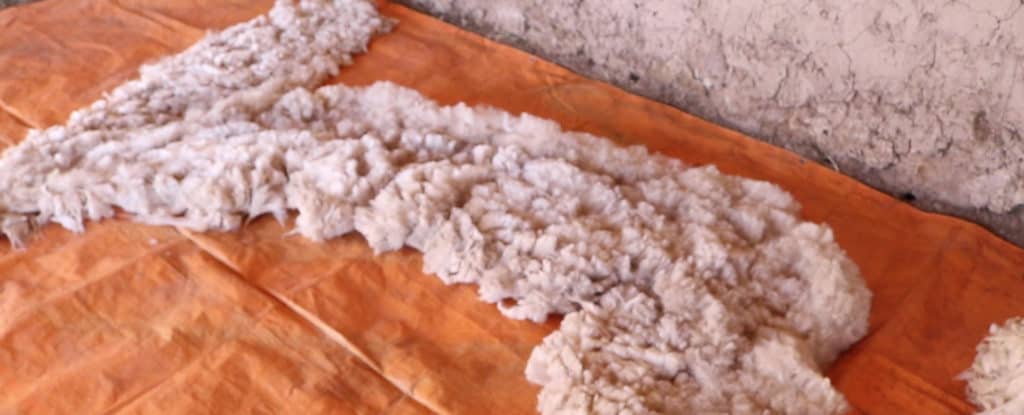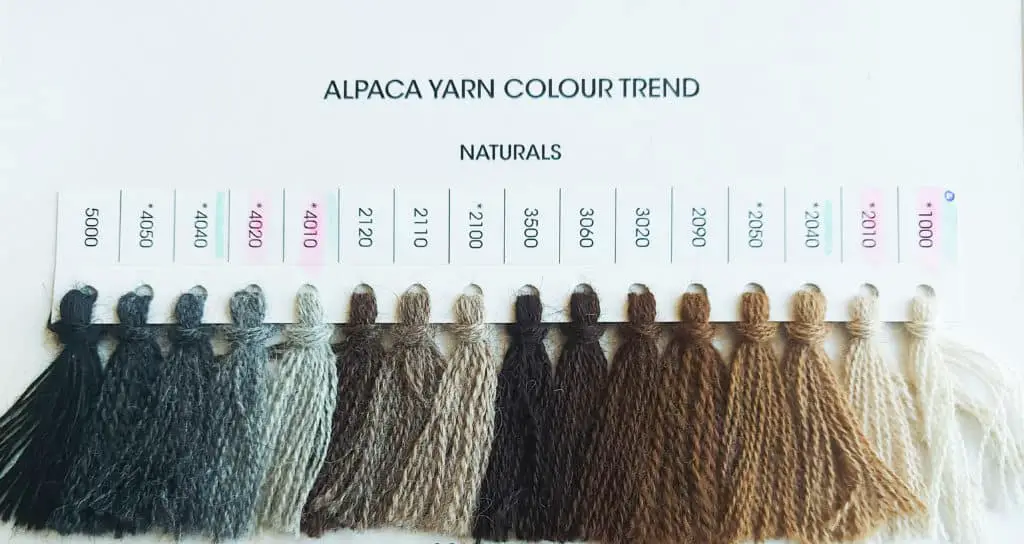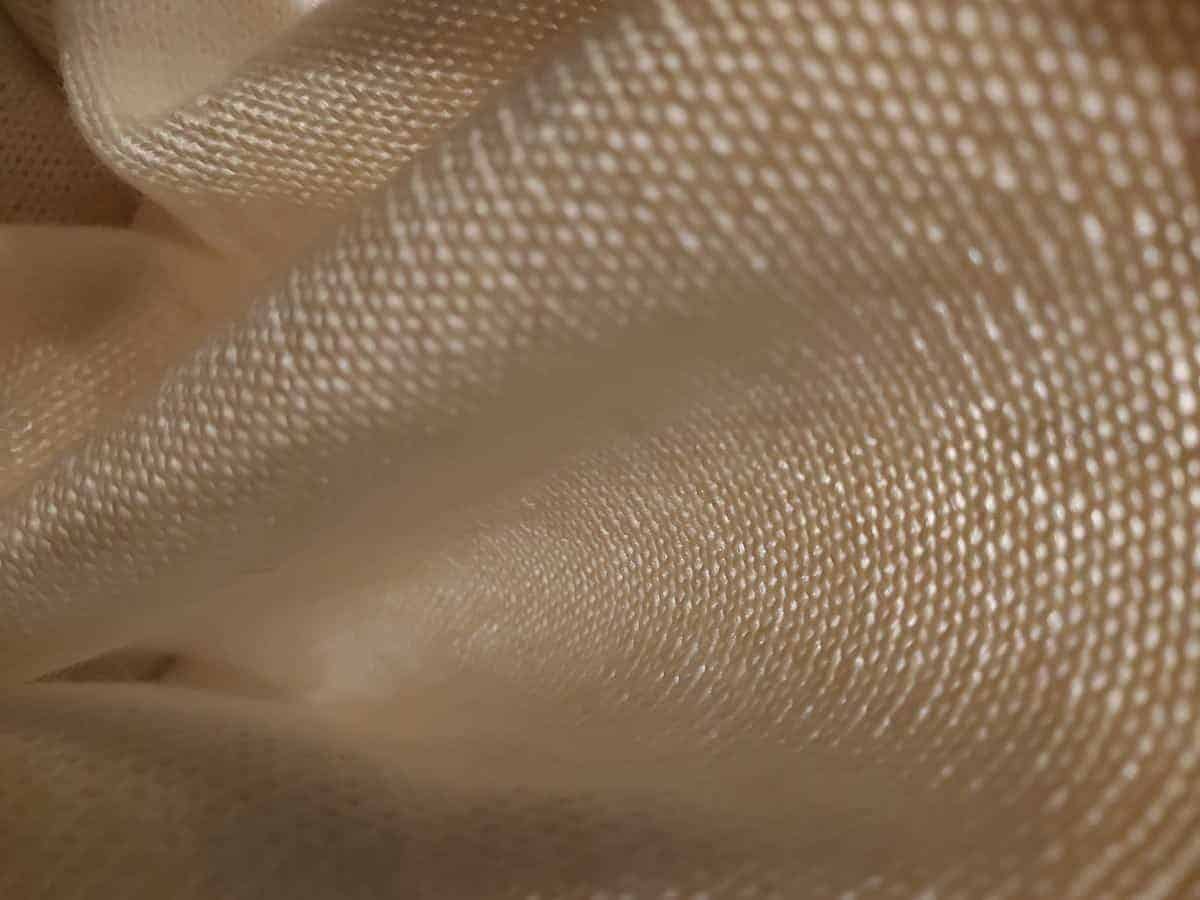If you like high quality materials that make for beautiful and exclusive garments, you must be wondering which one is better: alpaca or cashmere?
Muravlenko In terms of features, alpaca wool and cashmere are very similar: both fibers are warm, strong and luxurious. However, cashmere is generally softer than (regular) alpaca wool and thus more expensive. On the other hand, alpaca wool is much more sustainable since cashmere is often mass-produced.
| fortnightly Comparing | Alpaca Wool | Cashmere |
|---|---|---|
| Price | $ 60 – 200 | $ 10 – 150 |
| Sustainability | A very sustainable option, although not as exclusive as cashmere | Not sustainable due to mass-production and low yield. Look for small-businesses! |
| Features | More durable than cashmere, but more prickly | Prone to pilling, but softer on the skin than alpaca |
| Animal | Alpaca | Goat |
| Producing Countries | Peru, Bolivia | China, Mongolia |
Cashmere has been known to be a luxury fiber for decades, and alpaca wool is just starting to get more popular. Yet, they’re often compared to each other and recently alpaca wool is gaining in popularity. What are the reasons for this fluffy animal’s increasing popularity?
Comparing the Price of Alpaca Wool and Cashmere
Cashmere used to be an extremely exclusive and expensive luxury fiber, only affordable for the sophisticated fashion houses. Due to its popularity, the demand for cashmere grew (explosively) leading to some very unsustainable mass-production in China and Mongolia.
With the arrival of fast fashion, affordable cashmere became available for a wider public – and unfortunately, the impact of the cashmere grew increasingly more negative. As the prices of cashmere woolen products decreased, its production took a bigger tool on the environment.
- In comparison, alpaca wool has had a much less explosive growth, and while there is limited mass-production of alpaca wool, most farmers are small-scale, local farmers and producers.
I found the following prices available, based on some Internet research. You might find different prices based on your location and search settings though!
| Category | Baby “Royal” Alpaca 18 microns | Regular Alpaca 26 microns | Cashmere 19 microns |
|---|---|---|---|
| Raw Fiber (per ounce) | $ 10 | $ 2 – 6 | $ 12 |
| Finished Fiber (50g/1.76 oz.) | $ 10 | $ 4 | $ 15 |
| Finished Product(Pullover) | $ 200 | N/A | $ 150 |
| Knitted Scarf 100% (250 grams/8.8 ounces) | $ 100 | $ 75 | $ 100 |
| Fast Fashion Item(Knitted Sweater) | N/A | $ 60 (32% alpaca) | $ 100 (100% cashmere) |
One quick note about these prices: cashmere has a much wider price-range depending on the quality. Expect to pay a lot more for sustainable, fair-trade, treat-the-animals-with-love-cashmere.
- Cashmere goats have extremely low yield, which means that you need 4-8 goats to produce one sweater. Compared to alpaca wool, for which one animal yields 4 sweaters!
(Royal) alpaca wool and cashmere are actually very similarly priced. The main reason for this is that production of both fibers is very similar. Both fibers are obtained manually, mostly by shearing the animals. Fibers then need to be sorted, to separate the coarse hairs from the soft ones.

The main difference when it comes to these prices, is that alpaca wool doesn’t deal with the sustainability and cruelty issues like cashmere does. So, if you want to opt for a sustainable, fair-trade material, even royal alpaca will be less expensive than cashmere.
However, if you are looking for an exclusive, SUPER soft fiber, cashmere is your go-to.
And actually, I would want to vouch for expensive cashmere over the cheap-kind. As we will see later in this article, the animal-cruelty, negative impact on the environment and unethical working conditions for mass-scale cashmere is just terrible.
By opting for small-scale, local cashmere, you can find out much more about the farm and/or brand, and make sure you make an ethical and sustainable decision.
Comparing the Sustainability of Alpaca Wool and Cashmere
Both alpaca wool and cashmere are considered luxury fibers. Once, there was a time when luxury fibers were exclusive, not available for the wider public, but only for the local people, royalty or the very wealthy world-travellers from centuries ago. Some things have changed.
Alpaca wool and cashmere can both be incredibly sustainable fibers. Both fibers are strong, durable and require little chemical processing. They are biodegradable, hypoallergenic and don’t need much washing. However, mass-production of cashmere has caused it to become unethical, unsustainable and cruel.
The major difference is that cashmere has pushed to mass-production. Since it takes so many goats to produce so little wool, farmers are forced to work with big herds.
The biggest downside of cashmere is that mass production has caused farmers to increase the amount of animals they herd to such huge numbers that it leaves an enormously bad impact on three major areas:
- Pasture degradation: e.g. in Mongolia where overgrazing is a huge problem and large parts of the steppe is losing its biodiversity. Read more about this in this article from Science Mag.
- Quality of life of the animals: cashmere goats are low-yielding animals that require manual shearing or brushing which can’t be rushed!
- The human cost: due to overconsumption and underappreciation, cashmere farmers are forced to sell their raw fibers for less and less. In turn, farmers are forced to add more animals to their herds, which leads to more land degradation and worse quality of life for the animals.
The fear is that alpaca wool will head a similar direction, if its popularity increases. Luckily, this has not been the case so far.
| Characteristic | Alpaca Wool | Cashmere |
|---|---|---|
| Certified/Responsible Source | ✔ Responsible | ✔ Many cashmere producers apply vertical production ✘ Certification available, but limited |
| Chemicals used for production | ✔ Limited ✘ Possibly chemicals for scouring ✘ Possibly industrial dyes | ✔ Limited ✘ Possibly chemicals for washing ✘ Possibly industrial dyes |
| Limited Waste | ✔ Alpaca leaves almost no footprint | ✔ Goats provide fiber, milk and meat to herding communities ✘ Large herds can contribute to polluted water |
| Water Usage | ✔ Limited during life of alpaca ✔ Limited during production ✔ Limited need of washing | ✘ High amounts during life of goat ✔ Limited during production ✔ Limited need of washing |
| Fair Trade | ✔ Small-scale, local production | ✔ Available, brand dependent |
| Animal Cruelty Free/Vegan | ✔ Cruelty free available ✘ Not vegan | ✔ Cruelty free available ✘ Not vegan |
| Durable | ✔ Yes | ✔ Maintains shape and luster ✘ Prone to pilling and matting |
| Harmless to the Body | ✔ Contains no lanolin ✔ Baby alpaca is itch-free ✘ Regular alpaca can be irritable | ✔ Contains no lanolin ✔ Itch-free |
| Reusable/Recyclable | ✔ Yes | ✔ Pre-consumer waste recycled cashmere |
| Fixability | ✔ High | ✔ High: high quality labels will provide extra yarn with a cashmere woolen garment |
| Biodegradable | ✔ Yes, when undyed | ✔ Yes, when undyed |
The most important benefits of animal fibers is that they are natural. When fibers are natural they have several advantages, like:
- Being biodegradable
- Being naturally water resistant
- Being naturally fire-retardant
- Limited waste during production process
These benefits apply to both alpaca and cashmere (and other animal fibers).
- High-end fashion houses that use cashmere for their production often include a little batch of yarn with your products in case of repairs. Knitted products are easily fixed – especially when you have the exact same yarn at hand! I truly LOVE this about cashmere!
Whereas alpaca wool comes in 22 natural colors (which is incredible!) cashmere is also naturally available in some beautiful pastel colors. Cashmere in dark colors is rare, however, and such garments are often dyed. Alpaca wool is available in dark colors.

“Official” certification of both fibers is hard to come by, but if you want to put some effort into finding good garments, you should be able to find many (small) sustainable and responsible brands on the internet.
Comparing the Features of Alpaca Wool and Cashmere
One way of describing fibers is by looking at their features. Whether you find one fiber “better” than the other will depend on what kind of features you find important.
In the case of alpaca vs. cashmere, there are only a few differences. Generally, both fibers are high quality fibers and produce garments that are luxurious, exclusive and elegant.
When you compare the features of alpaca wool and cashmere you will notice that cashmere is used for more elegant garments, whereas alpaca is used for all sorts of garments – from outdoors-y to elegant. This is because the alpaca fiber is slightly longer and thus more durable.
| Feature | Alpaca | Cashmere |
|---|---|---|
| Water-repellent |   |  |
| Water absorption |    | Couldn’t find a % but probably similar to alpaca |
| Warm |    |    |
| Breathable |    |   |
| Antibacterial |   |   |
| Wrinkle-free |   |   |
| Fire-retardant |    |    |
| Stretchy |  |  |
| Lightweight |    |    |
2 hearts: High
3 hearts: Very High
The best way to compare cashmere and alpaca, is by only looking at the royal/baby alpaca fibers (not the regular ones). In terms of microns, cashmere and royal alpaca are very similar (both around 18). The reason for this is that cashmere is the soft underdown from the goat.
The coarse hair gets separated from the soft down, which means that the soft, warm, fluffy fiber is left. Fine fibers like these are solid fibers, which means that the warmth and softness are comparable.
Another similarity is that both fibers are shiny and lustrous, which is why both materials are used for elegant, exclusive fashion.
- The main difference between alpaca and cashmere is probably the length of the alpaca fiber: it is longer compared to cashmere. The most important difference is therefore that alpaca wool is much less prone to pilling, whereas cashmere garments are likely to show wear and tear.
Comparing the Softness and Comfort of Alpaca Wool and Cashmere
Because softness is such an important feature of wool fibers, I feel it deserves more of an in depth-comparison to truly understand the differences between alpaca and cashmere.
When cashmere is used for garments, it cannot exceed 19 microns. This micron-range is similar to royal alpaca (18-20) and soft baby alpaca (21-23). Most alpaca wool however is regular alpaca wool with an average micron-count between 24-26 microns. In short: cashmere is probably softer than most alpaca wool.
However, when comparing fibers of the same micron range, you can see that both fibers have a similar texture. The thin hairs have small scales, and according to Cameron Holt the scale protrusion of both alpaca and cashmere is only .4 of a micron, whereas sheep wool doubles that (.8 of a micron).
This indicates that both alpaca and cashmere of a similar diameter are equally soft.
| Category | Micron Range* | Category | Micron Range** |
|---|---|---|---|
| Royal Alpaca | <18 microns | Baby Cashmere | 13.5 microns |
| Super Fine Alpaca | 18 – 20.5 microns | Chinese Goats | 14.5. – 15.4 microns |
| Baby Alpaca | 20.6 – 22.5 microns | Mongolian Goats | 16 – 17 microns |
| Fine Alpaca | 22.6 – 25.5 microns | Iranian Goats | 17 – 20 microns |
| Medium Alpaca | 25.6 – 30 microns | Guard hair | >30 microns |
| Strong Alpaca (Guard hair) | >30 microns |
**Source: Alphatops
Just because of its wider availability, cashmere is considered excellent for people with sensitive skin or wool allergies. It is particularly superb when it comes to the impact on the body: it is so soft that even people with wool sensitivity should be able to wear it without (much) trouble. It is much softer than regular alpaca, although similar compared to royal alpaca.
Both fibers are also hypoallergenic, meaning that they have little to no lanolin. Cashmere comes from goats, and goats simply don’t have lanolin on their fleece. Alpacas do have lanolin in their fleece, but this is so limited that almost everything will be removed after the washing process.
Cashmere and alpaca are both breathable, soft and absorbent, which means that wearing those garments will be comfortable in many different temperatures, environments and while doing different types of activities.
Both materials are considered practical and comfortable for people with sensitive skin.
Conclusion
If you’re curious to know whether alpaca wool or cashmere would be best for you, this information is probably dazzling you by now! So, I’ve made a list. Two lists, actually. One for people who might prefer alpaca wool, and one for those who might like cashmere better.
You might prefer alpaca wool if you:
- Are into sustainable fashion (on a budget)
- Are into fair-trade fashion (on a budget)
- Don’t have sensitive skin
- Want a durable material
- Are looking for multi-purpose clothes
- Are looking for flattering clothes
- Like smooth and silky garments
- Want a luxurious look
You might prefer cashmere if you:
- Have really sensitive skin
- Want very exclusive items
- Are looking for flattering clothes
- Like smooth and silky garments
- Want a luxurious look
- Have an unlimited budget and can invest in sustainable and fair-trade clothing


